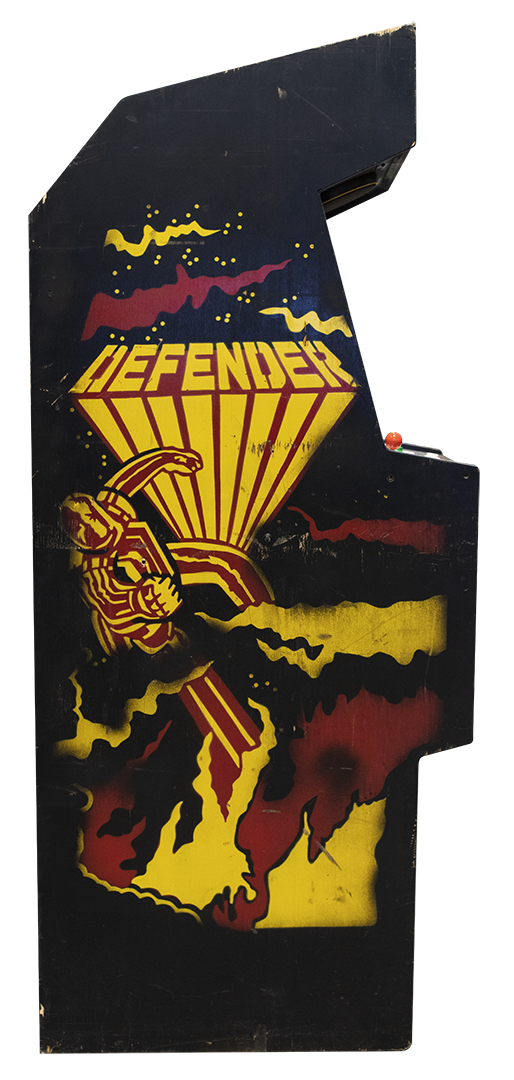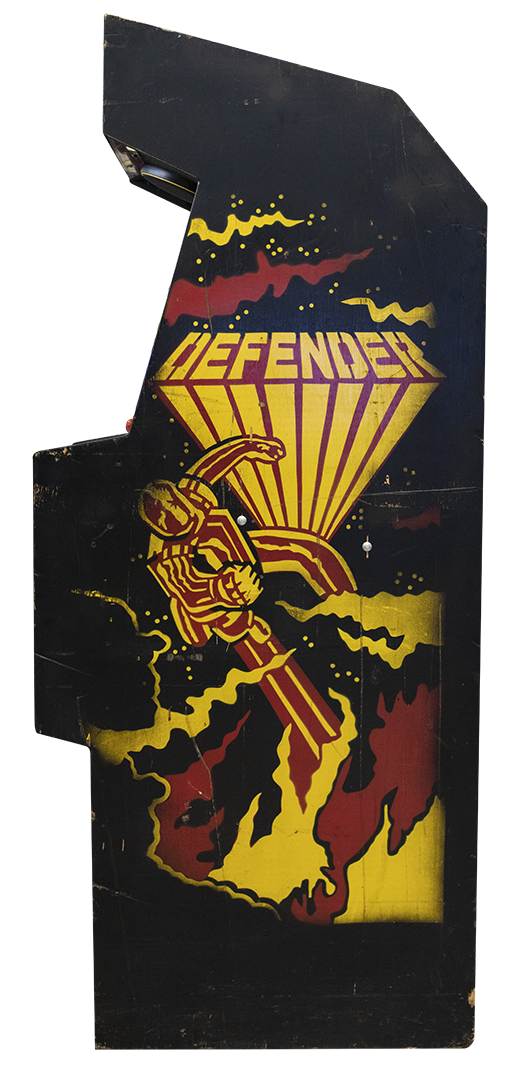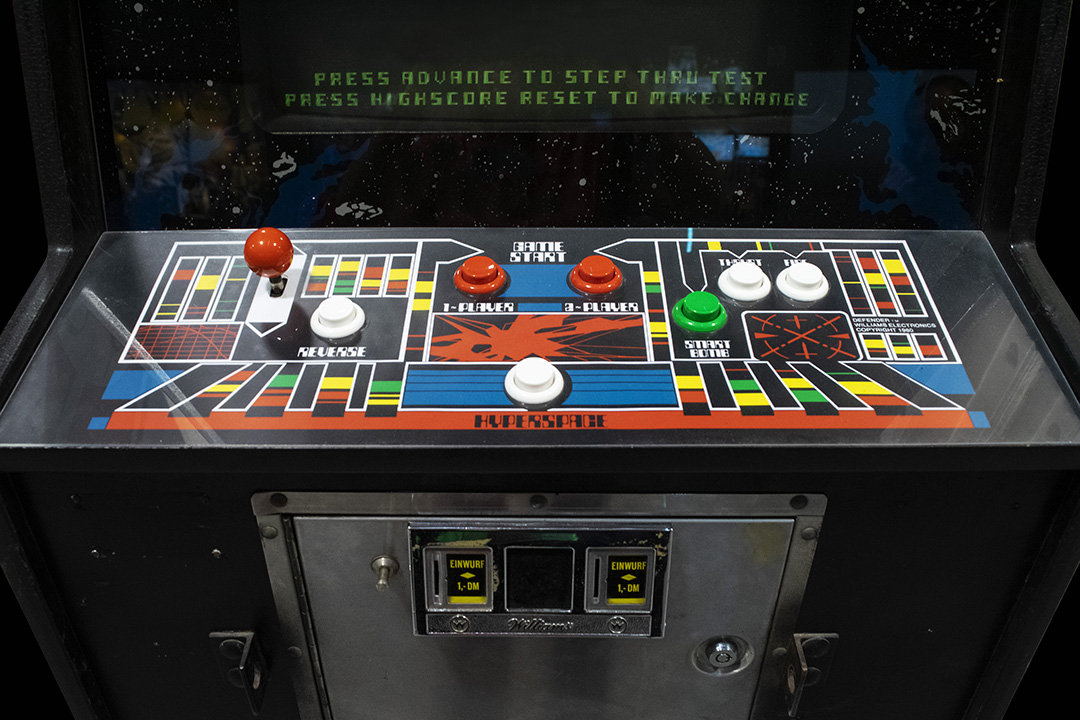
Defender
TECHNICAL DATASHEET
Game name: Defender
Manufacturer: Williams Electronic Inc.
Year of development: 1981
Category: Scrolling shooter
Hardware Platform Info:
- Motorola 6809E@1Mhz Gaming Processor
- 6808 or 6802 processor for sound on a separate card
- 48Kb of DRAM, 38Kb of which are for the screen buffer
- 1Kx4bits CMOS RAM with battery to save settings and records / 48K ROM
- Video Resolution 304x256 pixels
- Allows 16 colors at a time per screen, from a palette of 256
Main developers: Eugene Jarvis, Larry Demas
Music Composer: Sam Dicker
GAME STORY
History of development:
Defender is an arcade video game developed and sold by Williams Electronics in 1981. It is a video game of shots in a two-dimensional world. It is located on a fictitious planet where the player must overcome waves of enemies from outer space while protecting the astronauts located on the surface.
The development was led by Eugene Jarvis, a pinball programmer at Williams Electronics. Defender was Jarvis's first video game project, inspired by Space Invaders and Asteroids. Williams planned to show the game at the Amusement & Music Operators Association fair (AMOA). Because the development of the game was delayed, the team had to work on it until the beginning of the fair.
Defender was a commercial success, selling approximately 55,000 units and becoming the company's best-selling arcade game. Critics praised the audiovisual effects of the game and its playability. It is frequently named as one of Jarvis' best contributions to the video game industry, as well as one of the most difficult video games. Defender was ported to numerous platforms, inspired by the development of other games, and was followed by sequels and many imitations.
General description of the game:
Defender is a two-dimensional side-scrolling shooter located on a nameless planet. The player controls a spaceship that moves across the surface and can move left or right. A joystick controls the ship's elevation and five buttons control its horizontal direction and weapons.
Players have three ships to progress in the game. They also have the opportunity to win more ships by reaching the necessary points. A ship is lost when touching an enemy or their bullets. When you lose all the ships, the game ends.
The goal is to destroy alien invaders, while protecting astronauts on the surface from an abduction. Abducted astronauts become mutants who attack the spaceship. When extraterrestrials are defeated, you advance to the next level. If all astronauts in a level are abducted, the planet explodes and the level is filled with mutants. If you survive the waves of mutants, the planet reappears.
Curiosities:
Every 10,000 points give you an extra ship. When you drop the bomb (there are three per ship), all enemy ships that are currently on the screen are destroyed.
It is one of the first games to introduce the concept of 'scanner' as a reduced view of what happens beyond the screen.
HISTORY OF THE MACHINE IN ARCADE VINTAGE
Status: OPERATIONAL
Information about the location and purchase by Arcade Vintage:
This is one of the first original pieces of furniture to be brought to Arcade Vintage by Kevin Pit from Brighton (England), in September 2013. In this case it was just an empty piece of furniture, it didn't even have a monitor or control panel.
Information about the restoration process or repairs carried out:
Ricardo was in charge of its complete restoration at the end of 2013, in relation to the set of plates that the machine has and the control panel. Rafa installed a Hantarex monitor that José Mª had in the workshop.
Pending repairs or restorations:
Later on we will try to reinstall his original monitor.
Links to other related websites:
https://www.gamasutra.com/view/feature/132467/the_history_of_defender_the_joys_.php?print=1






